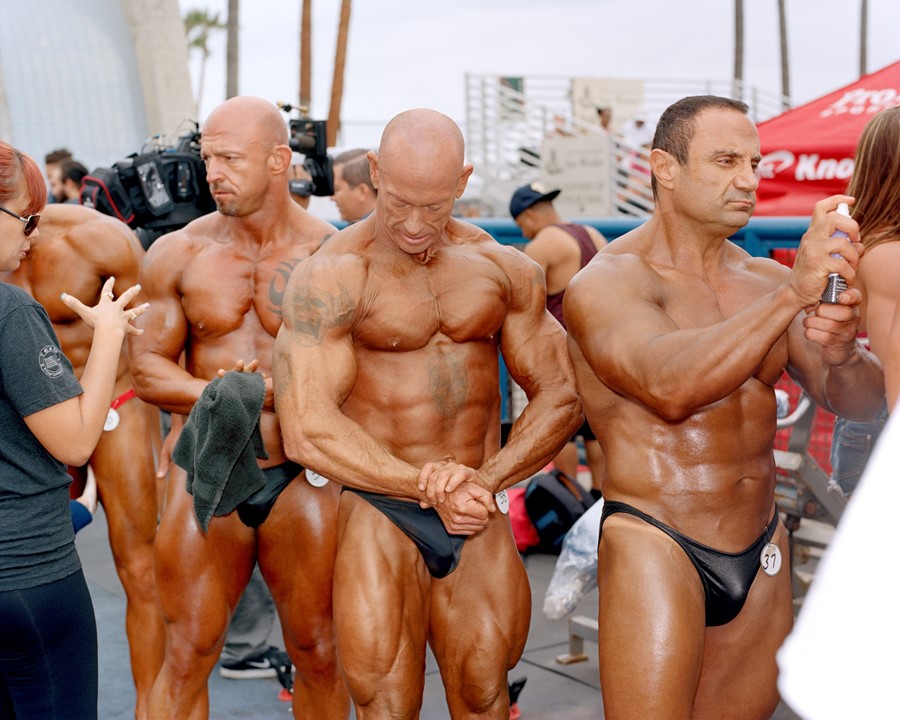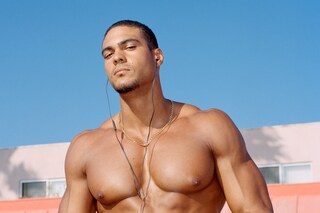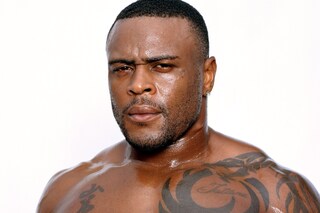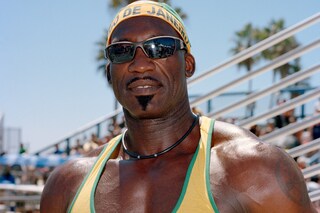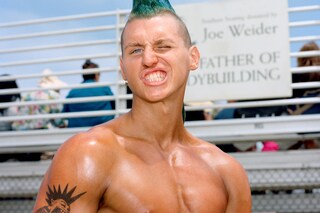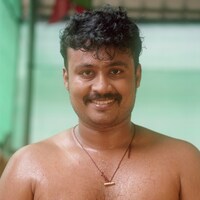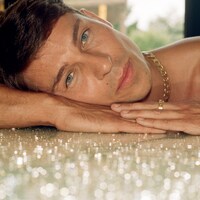We speak with a group of older gym buffs who are still training intensely and enduring strict regimes years after their heyday
Welcome to Behind The Masc: Rethinking Masculinity, a campaign dedicated to exploring what ‘masculinity’ means in 2019. With photo stories shot in Tokyo, India, New York, and London and in-depth features exploring mental health, older bodybuilders, and myths around masculinity – we present all the ways people around the world are redefining traditional tropes.
“Even as a child I’d cry and kick off if I lost a board game. I’m the second child and my brother was very big and strong at a young age so I had to work hard to compete,” says Oli Thompson. Oli is a London-based MMA fighter and previously held the title of Britain’s Strongest Man back in 2006. As you can imagine, he’s competitive. Very competitive.
At 39 years old, he might seem older than most people assume a bodybuilder would be, but he still plunges himself deep into the gym two hours a day, seven days a week, because competitive people rarely shed that must-win skin. “I was really fortunate that as I hit my teens I could do almost anything athletically so I was able to feed those competitive feelings,” he admits. “Having been a professional for so long now, I’ve a better ability to control my emotions but I still feel a lot of pain when I’m forced to accept the possibility that anyone could do anything better than I can.”
At an age where many men begin their gradual descent into paunchy middle age, some are enduring punishing regimes in order to transform their bodies – but they’re not alone. Arnold Schwarzenegger, the man who has done more than pretty much anyone else on the planet to popularise bodybuilding in the public eye, is old enough to qualify for a bus pass, and nostril-flaring potential presidential candidate Dwayne ‘The Rock’ Johnson is just shy of 50.
But what is it about hitting middle age that encourages men to go into overdrive on the weights machine – is it something to do with masculinity, virility, insecurity? Just a desire to stay in shape? Or all of the above?
“What is it about hitting middle age that encourages men to go into overdrive on the weights machine – is it something to do with masculinity, virility, insecurity? Or all of the above?”
“I’m 43 and in way better shape than most 23-year-olds,” boasts Greg Doucette, a Canadian powerlifter. Inspired, he says, by He-Man initially and then Schwarzenegger, Greg is one of the best known names in contemporary bodybuilding and possesses a physique that’d have Samson pulling his hair out with envy. With his gargantuan thighs, teeny-tiny waist that fans out into a 48” chest, and the sort of enormous bulging biceps, Doucette has a classic modern bodybuilder’s frame.
Turbo-charged, hyper-defined, and alarmingly-OTT, Greg’s interest in physical development emerged during his pre-pubescence. Lying on the sofa one day, he saw a 13-year-old taking part in a bodybuilding competition as part of a segment on That’s Incredible!, an American television show. A seed had been sown. “People tend to naturally like doing things they’re good at, and I’ve been good at lifting since I first started at the age of 10,” Doucette says.
By the age of 17 he’d graduated from working out with his dad (and the hand-made equipment his dad engineered when it became apparent that maybe a gym full of adult men wasn’t the best place for a 10-year-old to be hanging out) to entering competitions, setting a national bench-pressing record at his first attempt, lifting 342 pounds, which is just shy of 24.5 stone. Greg, back then, weighed around 10 and a half stone.
Over time, he built up a reputation as the man regarded by many as pound for pound the world’s strongest bodybuilder. He’s competed in 54 competitions since that first taste of victory, and in 2008 he set a World Powerlifting Congress record, bench-pressing a staggering 556 pounds (or 39.7 stone to us).
Today, Greg says he continues to train for two hours a day, every single day. “Half of it as about looking good. The other half is about feeling good,” he explains, attributing his sculpted body image to a mixture of vanity and self-care. I ask if his dedication to such an intense regime – and not to mention the attendant possibility of serious injury – is linked to lingering anxieties getting older. He is firm: “It has zero to do with that.”
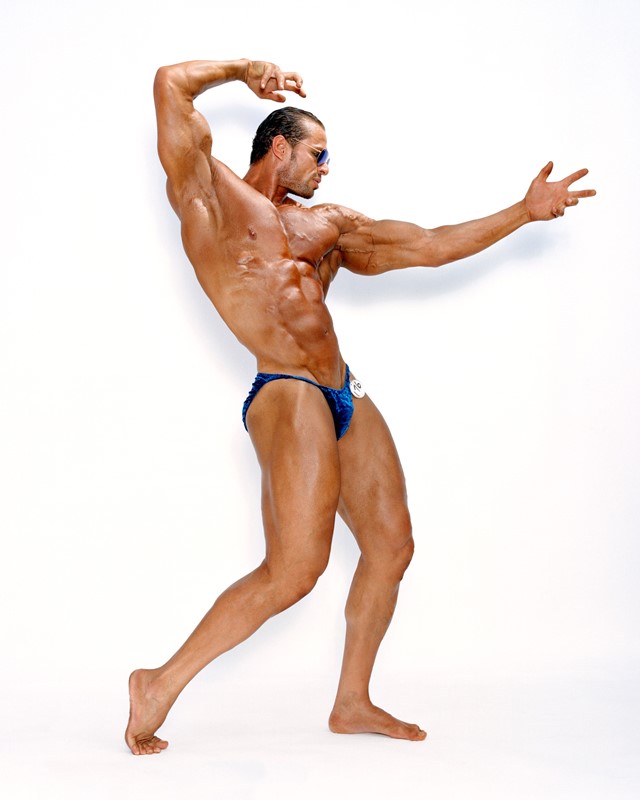
British bodybuilding legend Dorian Yates makes a similar argument. “This really wasn’t, and isn’t, about me and my ego.” he tells me. A six-time Mr. Olympia – the annual global strongman contest memorably featured in 1977’s Pumping Iron, the docudrama which brought a young Schwarzenegger to global attention – the now 57-year-old Yates’ record as a competing strongman is nearly unrivalled. Over the course of a career in bodybuilding, Birmingham-born Dorian won 15 major contests. He was known on the scene as ‘The Shadow’ for his tendency to shun the limelight in favour of focussing firmly on his presumably punishing training routines – and for the way he’d pop up at competitions seemingly unannounced, only to nab another first place finish.
“Everyone is different,” Yates says diplomatically when prodded about his need to stay in shape. “Even when I first started out I was already stronger than average bloke, so I never got into this out of any feelings of insecurity or body dysmorphia or anything like that.” He adds: “I enjoyed it and was good at it and I didn’t care what anyone else thought about me. Well, except from the judges.”
Agreeing with Yates, 52-year-old ex-professional bodybuilder and current fitness coach Jamo Nezzar believes there’s no one single reason as to why one would take to working out – whether you’re an occasional dumbbell botherer or a tank-like powerlifter – and that even then, those multiple reasons morph and change as one ages. “When you’re competing, everything is about looking good on stage,” he explains. “Now, it’s simply my life. I wake up at four in the morning to train because if I don’t train I don’t feel right. This whole thing is what makes me who I am.”
Similarly, Nezzar admits that in the days when competition was everything, the drive to stay in peak physical condition came from a determination to win, to wow judges, to be seen by his peers as the chest-heavy crème de la crème. However, he goes on to say that age has brought about change in how he approaches these sweaty early morning excursions. “I don’t pump heavy weights like I did in the old days. I’ve evolved, so I haven’t got injuries, because I’ve learned the best way to train for someone of my age. And crucially, I don’t feel like I have anything else to prove to anyone. If anything, age has brought with it more self-acceptance, a love of bodybuilding for the sake of bodybuilding.”
““I don’t pump heavy weights like I did in the old days. If anything, age has brought with it more self-acceptance, a love of bodybuilding for the sake of bodybuilding” – Jamo Nezzar
While you certainly wouldn’t mistake me down the leisure centre for Jamo or Dorian in their prime, I’m a regular gym-goer and I am almost entirely motivated by ego. Therefore, I’m surprised to hear from many of the guys that that isn’t a driving force. As an underweight man in his late-20s, I joined the gym in the hope that a slightly more filled out frame might lead to a general sense of fulfilment. In some way this has happened, and in large part that is because the better I think I look, the better I feel about myself. I am unabashed about seeing my endless sweaty hours banging out ab crunches and shoulder pulldowns as a means of assuaging the turmoil I’ve often carried around as a bloke with less muscular definition than the average 12-year-old.
In this way – and I think that is what does link me to the likes of Greg and Oli – it would seem that I’m using weight-based exercise as a path for exploring what the metaphorical weight of masculinity looks and feels like. After all, from early childhood onwards, boys are bombarded with images of muscle-bound ‘real men’, those who have latices of thick veins riding across their impossible thick forearms, or appearing on the big screen and in the wrestling ring. Those who prove that, in this life, bigger is better.
However, one of our bodybuilders isn’t quite so sure about this theory; it’s not who I expect to tell me that abs and guns aren’t everything. “For me, I’ve learned that priorities change as you get older,” explains Nezzar. “What matters to you as a man when you’re young don’t matter. I’m a father, so when I wake up in the morning it is about my daughter and my wife. They made me the person I am today. The man I am today.” It seems that even bodybuilders are eventually forced to look for true masculine fulfilment outside of the gym.
It would be easy to bracket a group of older men who regularly push their body to the limits as a demographic preoccupied with staving off the ageing process, but that seems to pedestrian a presumption. While for many of us the idea of a middle-aged man settling into his mature years might conjure up ideas of speeding down suburban side streets on brand new Suzuki motorcycles or turning to scale-model railway sets for comfort, it’s poignant that men of a certain age who are still pumping weights inspires such conflicted feelings within many of us. Like women, who might in their later years decide to have surgery, who are we to judge?
Read more from Behind The Masc: Rethinking Masculinity here.
